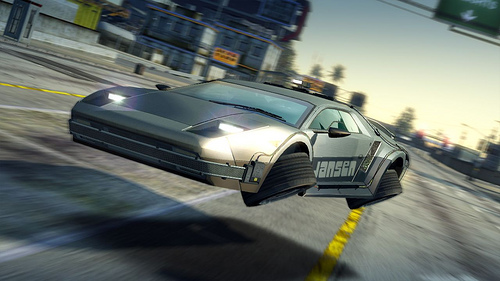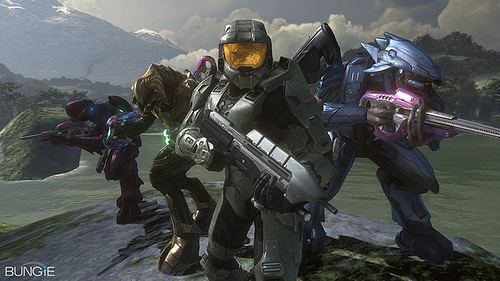The history of video games can be boiled down to a few key activities. Shoot things, drive/fly things, kick/punch things or jump over things.
In most cases each new game is another attempt to sell the same idea in a slightly different way. In most cases the developers fail and gamers are caught in a zero sum game of creativity, where hyperbole far outstrips the final product. Sadly there is no Moores Law for creativity, where it exponentially grows every eighteen months with processing power. Generational advances often make cars more shiny, trees more leafy and head-shots more accurate. The potential of the medium is rarely exploited, nor even understood by many inside the industry and those outside looking in. As Chaplin and Ruby (2005) pointed out in Smartbomb:
“Videogames aren’t simply a new medium, they’re an entirely new kind of medium altogether. Traditional media like books and movies use descriptions (linguistic, visual, etc.) as a means of representing and communicating ideas. Video-games use models”
It is these models that create the parameters within which we play our games. The boundaries of the game world are often all too apparent: an invisible wall, a door that doesn’t open or ‘things that glow’. This is one of my pet hates in games and was perhaps most spectacularly evident in 50 Cent “Blood On The Sand“. It has the most extraordinary things that glow such as huge ammo crates that sparkled. To say they shattered the illusion was an understatement. Actually, on reflection they added to the overall oddness of a work of near genius. These conventions are accepted and embraced, and the generational leaps forward always seem to fall foul of the same traps. However much processing power there is, it seems there will always be a ceiling or invisble wall to progress. Unless of course the cloud can provide unlimited computational power to create a perennial world. but then again, would you want a world that continued forever. Endless procedural generation would need create an atmosphere that could become familiar. Or ever feel like home.

Both games create a world that is contained, memorable and immersive. Halo 3 (I am not discounting Halo and Halo 2 here: rather simplifying matters for comparison) and Burnout Paradise. The more I think about these two worlds the more similarity I see between them and the more I see how the worlds have fundamentally shaped the game mechanic. If we consider Halo 3 and Burnout I see that there is a simple and fundamental similarity. These games both have a single primary objective. In one it is the drive to shoot things and in the other the drive to win races. Once on-line (as this comparison is only truly evident in the on-line experience) both of these games have a very similar nature in that they reward a single objective achieved within the game. Fundamentally a single objective is set and the reward comes from repeatedly completing that goal. Thereafter the reward for the player comes from doing the same thing again, but better.
The worlds of Halo 3 and Burnout Paradise are fundamentally the same. There is no difference between a Halo map and Paradise City. They are a finite world in which objectives need to be achieved. How you achieve them is up to you, but they are all governed by the same rules and parameters. In neither can you entirely subvert the premise of the game. Utilising ‘forge’ or a user generated map you can adjust the game, in the same way you could drive in reverse on Daytona but you are not changing the game itself. For all of the revolutionary elements of Little Big Planet it also was a game rooted in a single fundamental objective. The addition of features such as the ‘paintanator’ were simply tweaks, not step changes.

Of course, this is what gamers want. And they are given what they buy. The storm that MW2 is already causing on-line is evidence that people want more of the same. The point here is that very few games are truly innovative and what now passes for innovation is little more than a hybrid (or clever clone). The games industry needs to abandon the conventions that have bound the industry for 20 years and smash the wheel rather than endlessly trying to reinvent it.
